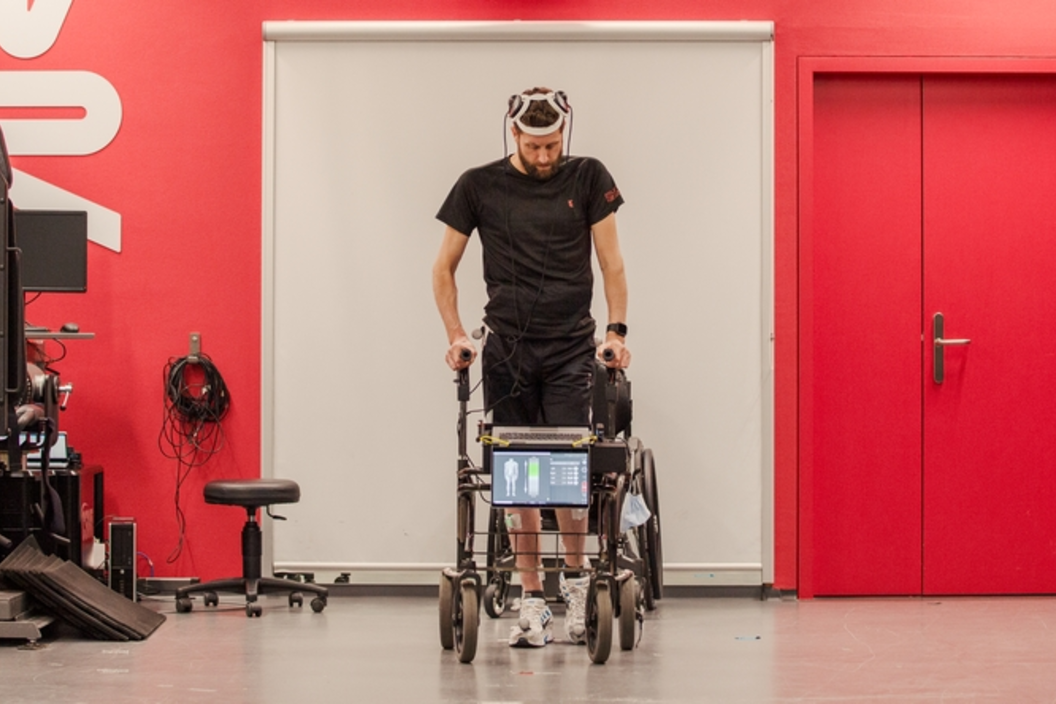“We have created a wireless interface between the brain and the spinal cord using brain-computer interface (BCI) technology that transforms thought into action.", summarizes Grégoire Courtine, Professor of Neuroscience at EPFL, CHUV and UNIL. Published in the journal Nature, "Walking naturally after spinal cord injury using a brain-spine interface" presents the situation of Gert-Jan, 40 years old, who suffered a spinal cord injury following a bicycle accident that left him paralyzed. The digital bridge enabled him to regain natural control over the movement of his paralyzed legs, allowing him to stand, walk, and even climb stairs. Gert-Jan explains that he has recovered the pleasure of being able to share a beer standing at a bar with friends : “This simple pleasure represents a significant change in my life”.
A digital bridge involving two electronic implants: on the brain, the other on the spinal cord
To establish this digital bridge, two types of electronic implants are needed. Neurosurgeon Jocelyne Bloch, who is a professor at CHUV, UNIL and EPFL, explains: "We have implanted WIMAGINE® devices above the region of the brain that is responsible for controlling leg movements. These devices developed by the CEA allows to decode the electrical signals generated by the brain when we think about walking. We also positioned a neurostimulator connected to an electrode array over the region of the spinal cord that controls leg movement.
Guillaume Charvet, head of the BCI program at CEA, adds: "Thanks to algorithms based on adaptive artificial intelligence methods, movement intentions are decoded in real time from brain recordings.” These intentions are then converted into sequences of electrical stimulation of the spinal cord, which in turn activate leg muscles to achieve the desired movement. This digital bridge operates wirelessly, allowing the patient to move around independently.
Recovery of neurological functions
Rehabilitation supported by the digital bridge enabled Gert-Jan to recover neurological functions that he had lost since his accident. Researchers were able to quantify remarkable improvements in his sensory perceptions and motor skills, even when the digital bridge was switched off. This digital repair of the spinal cord suggests that new nerve connections have developed.
At this stage, the digital bridge has only been tested in one person. Jocelyne Bloch and Grégoire Courtine explain that, in the future, a comparable strategy could be used to restore arm and hand functions. They add that the digital bridge could also be applied to other clinical indications, such as paralysis due to stroke. The company ONWARD Medical, along with CEA and EPFL has received support from the European Commission trough its European Innovation Council (EIC) to develop a commercial version of the digital bridge, with the goal of making the technology available worldwide.
Contacts and pictures
For medical information, please fill the form on .NeuroRestore
CHUV : medias(at)chuv.ch
EPFL : presse(at)epfl.ch
CEA : presse(at)cea.fr
Press kit for journalists


